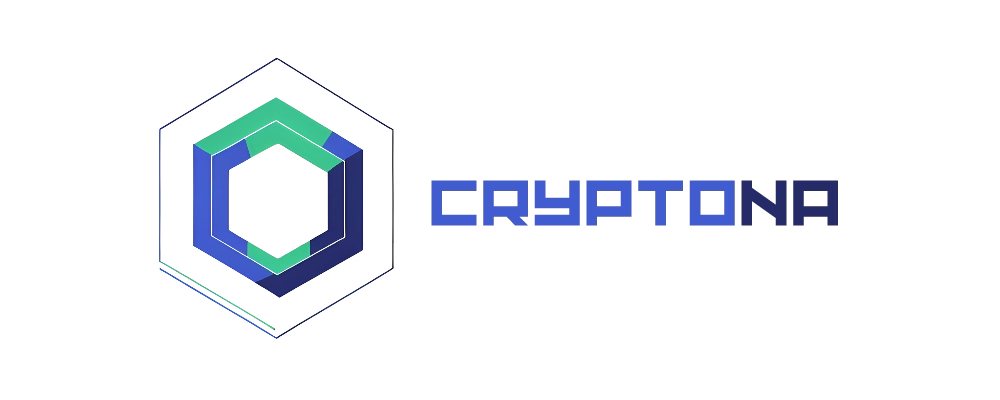The Return of a Privacy Pioneer
Zcash (ZEC) has always stood out as the coin that made privacy not only possible but practical in blockchain technology. In a world increasingly dominated by surveillance, data harvesting, and traceable transactions, Zcash represents something rare — a way to regain financial anonymity without abandoning transparency entirely.
As of December 9, 2025, ZEC trades at $415.92, reflecting mixed recent performance with a decline of approximately 7.8% in the past 7 days but showing resilience with an increase of over 15% in the last 24 hours, according to CoinMarketCap data. The cryptocurrency boasts a market capitalization of $6.67 billion and a circulating supply of 16.43 million ZEC. With a Fear & Greed Index score of 20 (Extreme Fear) and cautiously neutral market sentiment, Zcash has experienced significant volatility following its explosive rise earlier this year from below $50 to a peak of $742.
But beyond price movement, Zcash is once again proving its relevance through robust upgrades and real-world use cases. 2025 has marked major technical milestones for the project, including NU6.1 activation, Ztarknet L2 rollup development, and the transition from zcashd to Zebra node infrastructure — each enhancing privacy, scalability, interoperability, and network reliability. The blockchain now sees over 30% of all circulating ZEC (over 4.9 million ZEC) locked in shielded (private) addresses, hitting an all-time high and representing a powerful indicator that user trust in private transactions is climbing fast as adoption surges in response to growing financial surveillance concerns.
What Is Zcash (ZEC)?
Zcash (ZEC) is a privacy-focused cryptocurrency enabling users to send and receive funds securely using advanced cryptography. Built as a Bitcoin fork, Zcash maintains Bitcoin’s core principles — 21 million fixed supply and Proof-of-Work consensus — but takes financial confidentiality to an entirely new level.
Zcash leverages zero-knowledge proofs, specifically zk-SNARKs (Zero-Knowledge Succinct Non-Interactive Argument of Knowledge), allowing transaction validation without revealing any details like sender, receiver, or amount. Users can choose between two modes:
- Transparent transactions, similar to Bitcoin’s public ledger.
- Shielded transactions, which fully encrypt details on-chain.
This optional privacy structure is what makes Zcash unique — it gives individuals and institutions control over how much information to disclose. While some users prefer transparency for compliance, others rely on shielded transfers for confidentiality, especially in industries like remittances, philanthropy, or corporate payments where data exposure could be risky.
Purpose and Value Proposition
Zcash addresses one of the oldest concerns in cryptocurrency — financial privacy. Bitcoin, despite its pseudonymity, allows anyone to trace transactions and balances publicly. Zcash fixes that weakness through zk-SNARKs, ensuring complete transaction validity while hiding key details.
The use cases are vast:
- Remittances: Shielded payments protect personal income details.
- Donations: Anonymous giving without political or geographic risk.
- Business deals: Confidential transfers protect trade secrets.
Even Edward Snowden has publicly praised Zcash for its scientifically rigorous and transparent approach to privacy. Unlike “privacy-by-obscurity” coins, Zcash offers auditable privacy, which could prove essential for institutional adoption in a compliance-heavy financial environment.
Technology and Architecture
Zcash operates using Proof-of-Work (PoW) and the Equihash mining algorithm. Equihash is designed to be ASIC-resistant, promoting decentralization and fairer mining distribution compared to Bitcoin’s SHA-256.
Its main innovation, however, lies in its dual-address system:
- t-addresses (transparent): Public and traceable, ideal for regulated transactions.
- z-addresses (shielded): Fully private, utilizing zk-SNARKs to verify authenticity without revealing data.
Zcash’s flexibility enables hybrid usage — businesses can maintain transparency for audits while individuals retain privacy. The blockchain continues to evolve with new upgrades improving shielded transaction efficiency and interoperability across chains.
Tokenomics and Governance
Zcash mirrors Bitcoin’s fixed 21 million supply cap, ensuring long-term scarcity. The reward structure is as follows:
- 80% of block rewards go to miners.
- 20% supports a development fund, governed by community-approved allocations.
Governance in Zcash is decentralized, with input from developers, miners, and the Electric Coin Company (ECC) and Zcash Foundation. Major updates, such as network upgrades or funding proposals, require broad community consensus — an essential balance between innovation and accountability.
This governance model has sustained Zcash through years of volatility, ensuring continuous improvement while staying true to its privacy mission.
Major 2026 Developments Strengthening Zcash
1. NU6.1 Network Upgrade (November 2025)
The NU6.1 upgrade activated on testnet at block height 3,536,500, introducing critical fixes for Orchard shielded transaction balance calculations and enforcing stricter consensus rules. This upgrade enhanced Zcash’s shielded transaction architecture, improving network scalability and reliability.
Impact: Improved privacy transaction integrity and network consensus make ZEC more robust for institutional adoption and everyday use — an overall bullish development for long-term growth and network security.
2. Ztarknet L2 Rollup Devnet Launch (Q1 2026)
The Ztarknet devnet is scheduled for launch in Q1 2026, introducing a Starknet-inspired Layer-2 rollup using Circle-STARK proofs to enable programmable smart contracts on Zcash without altering its base-layer privacy. This allows developers to build privacy-preserving DeFi applications on top of Zcash.
Impact: This opens the door to privacy-preserving DeFi and Web3 integration, marking a neutral-to-bullish catalyst. While programmability could attract developers and DeFi users, adoption depends on developer traction and seamless integration with Zcash’s shielded pools.
3. Zashi 2.0 Wallet Enhancements (Q4 2025 – Ongoing 2026)
The Zashi 2.0 roadmap prioritizes major upgrades including ephemeral addresses (single-use for swaps), transparent address rotation (to reduce linkability), and improved hardware wallet support. These enhancements aim to simplify shielded transactions and improve user experience.
Impact: A bullish signal for ZEC, as improved usability could significantly increase daily shielded volume (currently ~30% of ZEC supply) and drive both retail and institutional adoption by making privacy transactions more accessible and user-friendly.
Zcash (ZEC) Price Prediction for 2026
| Month | Minimum Price | Average Price | Maximum Price |
|---|---|---|---|
| January | $106.64 | $503.64 | $305.14 |
| June | $54.20 | $319.43 | $186.82 |
| December | – $8.74 | $98.38 | $44.82 |
Annual Averages (2026):
- Minimum: -$8.74
- Average: $98.38
- Maximum: $44.82
- ROI: -86.5%
2026 is likely to act as a cooling-off phase following 2025’s massive rally. Price retractions could align with crypto market corrections, mirroring Bitcoin’s mid-cycle dips. However, fundamentals like Sapling optimization (90% cheaper shielded transfers) and continued exchange relistings might prevent deeper collapses.
If shielded adoption reaches 30% of circulating supply by 2026, Zcash could solidify itself as the de facto standard for confidential transactions, cushioning any bear market impact.
Zcash (ZEC) Price Prediction for 2027
By 2027, Zcash could be entering another major market cycle, potentially fueled by the broader crypto rebound following the anticipated 2028 Bitcoin halving. Changelly’s 2027 forecast suggests a steady recovery for ZEC, driven by maturing privacy technology and increased shielded transaction adoption.
| Month | Minimum Price | Average Price | Maximum Price |
|---|---|---|---|
| January | $22.93 | $122.23 | $78.71 |
| June | $181.26 | $241.51 | $248.15 |
| December | $371.26 | $384.63 | $451.47 |
Annual Averages (2027):
- Minimum: $371.26
- Average: $384.63
- Maximum: $451.47
- ROI: +36%
From a technical standpoint, 2027 could represent Zcash’s reaccumulation year. As institutions re-enter crypto markets and privacy regulations evolve, projects offering “compliant anonymity” will become increasingly valuable. Zcash’s hybrid model—offering both transparency and privacy—makes it a prime candidate for adoption in corporate finance, remittance platforms, and decentralized identity systems.
The expected rebound to the $450 range aligns with past halving-cycle patterns, where privacy coins tend to recover earlier than large-cap cryptos. The Sapling upgrade’s mobile-friendly privacy, along with Zashi’s cross-chain interoperability, positions ZEC to benefit from Web3’s continued expansion.
If Zcash maintains its strong developer activity and continues collaborating with regulators, it could experience its most stable growth phase since 2021.
Zcash (ZEC) Price Forecast for 2028
The year 2028 is shaping up to be monumental for Zcash—not only because of the next halving event, but also because privacy could become one of the most demanded blockchain features. As surveillance-driven financial systems like CBDCs (Central Bank Digital Currencies) expand, users will increasingly seek coins like ZEC for private value storage and peer-to-peer payments.
| Month | Minimum Price | Average Price | Maximum Price |
|---|---|---|---|
| January | $386.67 | $400.52 | $467.58 |
| June | $463.70 | $480.00 | $548.11 |
| December | $556.13 | $575.36 | $644.75 |
Annual Averages (2028):
- Minimum: $556.13
- Average: $575.36
- Maximum: $644.75
- ROI: +94.2%
This is where Zcash could truly shine again. With shielded transactions expected to exceed 35% of total supply, demand for private transactions may reach all-time highs. The Tachyon performance improvements will continue to pay dividends by reducing transaction latency and costs, making ZEC viable for daily private payments and microtransactions.
Historically, halvings have preceded major bull runs, and ZEC’s unique supply model mirrors Bitcoin’s scarcity. Combining lower emission rates with strong privacy demand could potentially push ZEC toward or above $600 by year-end 2028.
The main challenge will be regulatory pressure—especially from the EU’s proposed ban on “anonymity-enhanced” assets by 2027. Still, Zcash’s optional transparency could make it the only privacy coin capable of institutional integration under compliance frameworks.
Zcash (ZEC) Price Forecast for 2029
By 2029, the effects of the halving will be fully priced in, potentially pushing ZEC into a significant bull market phase. The Changelly forecast paints a highly optimistic picture for this period, suggesting exponential growth as global demand for private, secure digital assets reaches maturity.
| Month | Minimum Price | Average Price | Maximum Price |
|---|---|---|---|
| January | $577.53 | $597.08 | $672.10 |
| June | $684.53 | $705.66 | $808.85 |
| December | $812.93 | $835.95 | $972.95 |
Annual Averages (2029):
- Minimum: $812.93
- Average: $835.95
- Maximum: $972.95
- ROI: +193%
If Zcash reaches these levels, it would represent a nearly 3x increase from late 2025 prices. Several factors could support this rise:
- Growing distrust in centralized data systems and CBDCs.
- Broader integration of zk-SNARK technology in DeFi and Web3 applications.
- Potential listings on new institutional trading platforms as privacy norms evolve.
2029 could also see ZEC’s entry into enterprise payment rails—especially if its privacy-preserving tech becomes embedded into major financial APIs or payment processors. The coin’s hybrid compliance model continues to be a selling point: users retain privacy, while businesses maintain auditability.
A sustained push toward the $1,000 mark would make Zcash one of the decade’s top-performing legacy cryptocurrencies, rivaling Bitcoin’s growth percentages during similar market cycles.
Zcash (ZEC) Price Prediction for 2030
2030 represents the long-term horizon for Zcash — a full decade since its early adoption wave. By this point, ZEC could transition from a niche privacy token to a mainstream privacy infrastructure layer used across multiple blockchains.
| Month | Minimum Price | Average Price | Maximum Price |
|---|---|---|---|
| January | $836.94 | $860.87 | $1,008.95 |
| June | $956.97 | $985.48 | $1,188.98 |
| December | $1,101.00 | $1,135.00 | $1,405.00 |
Annual Averages (2030):
- Minimum: $1,101
- Average: $1,135
- Maximum: $1,405
- ROI: +323.2%
At these prices, Zcash would be solidly within four-digit territory, confirming its survival and success amid regulatory turbulence. Institutional support, such as Grayscale’s ZEC Trust and potential Coinbase listings, could boost liquidity and legitimacy.
Zcash’s evolution into an interoperable privacy hub — bridging assets across Ethereum, Solana, and Bitcoin — could drive consistent network utility. If shielded transactions surpass 50% of circulating supply by 2030, ZEC could rival top-tier cryptocurrencies by total transaction volume.
While global policy risks remain (especially if privacy bans tighten), the world’s growing need for financial confidentiality suggests Zcash’s value proposition will age well. The combination of fixed scarcity, efficient zk-proof technology, and a maturing user base could make ZEC one of the defining digital assets of the next decade.
Institutional Adoption and Regulatory Outlook
Institutional involvement in Zcash remains mixed but promising:
- Grayscale’s Zcash Trust currently holds about $137 million in ZEC, reflecting steady long-term interest.
- Coinbase’s potential relisting would expand ZEC’s liquidity and visibility, much like the Ethereum Classic rally (+200%) after its own listing.
- However, more than 70 exchanges globally have delisted privacy coins in 2025 due to compliance uncertainty.
Regulation remains ZEC’s biggest wild card. While the EU and IRS explore restrictions, Zcash’s selective disclosure mechanism allows it to remain compliant — auditors can verify specific transactions without exposing full histories. This could make ZEC uniquely resilient compared to fully opaque competitors like Monero.
Zcash (ZEC) Long-Term Price Projection Overview (2026–2030)

The chart illustrates Zcash’s projected price trajectory from 2026 through 2030, highlighting minimum, average, and maximum expected values for each period. The visualization shows a sharp correction in 2026 following ZEC’s prior rally, with minimum prices briefly dipping into negative forecasts—reflecting strong bearish sentiment and potential market overreactions. Beginning in 2027, the trend shifts upward as Zcash enters a recovery phase supported by maturing privacy technology and renewed institutional interest. By 2028, the model predicts stronger momentum driven by the Bitcoin halving and rising demand for privacy-preserving assets, pushing ZEC into sustained growth territory. The upward trajectory accelerates into 2029 and 2030, where all three price curves—minimum, average, and maximum—reach their highest levels, signaling long-term confidence in Zcash’s scarcity, technological evolution, and increasing role in a privacy-focused digital economy.
Long-Term Investment Potential
Zcash combines the scarcity of Bitcoin with the privacy of Monero, but adds something neither fully achieves: compliance flexibility. It offers the security of anonymity without alienating regulators entirely.
Pros:
- Proven technology (zk-SNARKs, Halo 2).
- Fixed 21 million supply, ensuring scarcity.
- Robust community and consistent development.
- Rising institutional and developer interest.
Cons:
- Regulatory bans in some jurisdictions.
- High competition from emerging zk-protocols.
- Occasional delistings limit liquidity.
Still, the recent Tachyon and Zashi upgrades demonstrate ongoing innovation, ensuring Zcash stays relevant in a rapidly evolving market. For investors who value privacy and scarcity, ZEC remains one of the strongest long-term candidates in the altcoin space.
Conclusion
Zcash stands as one of the few cryptocurrencies staying true to its founding purpose — financial freedom through privacy. With a proven decade-long track record, powerful cryptographic foundations, and adaptability in a tightening regulatory landscape, it remains both a technological and ideological leader.
From $415 today to a possible $1,400 by 2030, Zcash’s story is one of endurance and innovation. Whether as a hedge against surveillance economies or as a privacy layer for the decentralized web, ZEC’s role in the future of digital finance seems inevitable.
Zcash is not just surviving — it’s evolving. And as long as privacy matters, so will ZEC.
FAQs
1. Will Zcash survive until 2030?
Yes. Given its consistent upgrades, strong governance, and institutional backing, ZEC is positioned for long-term viability — even under increasing regulation.
2. Is Zcash truly private?
Yes. ZEC uses zk-SNARKs to enable fully shielded transactions that hide sender, receiver, and amount — unlike pseudonymous Bitcoin transactions.
3. Can ZEC reach $1,000 by 2030?
Based on Changelly’s projections, yes. The maximum expected price by 2030 is $1,405, assuming steady growth and adoption.
4. Is Zcash better than Monero?
They serve similar purposes, but Zcash offers optional transparency, making it more suitable for compliant institutional use.
5. Where can I buy and store Zcash safely?
You can purchase ZEC on exchanges like Binance, Kraken, or Changelly. For maximum security, store it in a hardware wallet (Ledger, Trezor) or shielded wallets like ZecWallet or YWallet.






















Leave a Reply